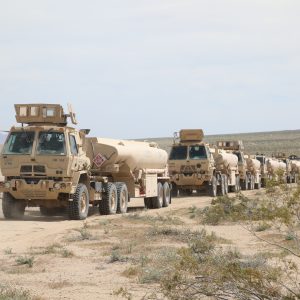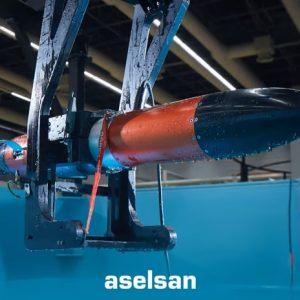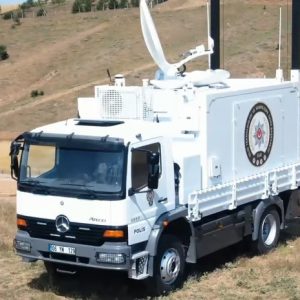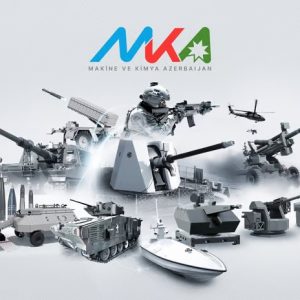Portable power is now a combat capability. Galvion BATLCHRG packages wireless power technology into soldier‑ready and drone‑ready formats, removing cables and connectors from routine charging in vehicles, command posts and forward positions. The approach—built with Quaze Technologies’ magnetic‑resonance transfer—aims to keep radios, sights, NVGs and Group‑1 UAVs topped up without operator action, even under snow or sand [1].
Key Facts
What: Galvion BATLCHRG wireless charging suite for dismounted soldiers (MX) and unmanned systems (UX)[1][2].
How: Magnetic‑resonance power mats enable contactless recharging “within proximity,” no alignment pins or exposed connectors[1][3].
Where shown: SOF Week 2024 (MX concept), DSEI 2025 (UX launch), AUSA 2025 (field demos)[2][4][5].
Use cases: Seat‑back soldier charging during movement; drone landing pads for autonomous turnarounds; scalable pads for UGVs[1][2].
Why wireless power matters at the tactical edge
Modern squads carry an electronic ecosystem. Radios, controllers, weapon sights, tablets, beacons and micro‑UAVs compete for watt‑hours. In practice, power risk drives tactics: leaders ration battery swaps, carry spares, or push resupply closer to the line. Galvion BATLCHRG reframes this problem as background charging—soldiers top up while seated in a vehicle; drones recover and charge on a pad without a tether; UGVs park and sip. The intent is less friction, fewer cables and fewer dead devices when contact starts [1][2].
Under the hood: magnetic resonance, not fragile plugs
Magnetic‑resonance wireless power uses coupled coils tuned to the same frequency so energy tunnels across a short distance. Because the field penetrates debris, charging can continue under snow or dust covers and without precise device alignment. The mat connects to vehicle power, a generator or solar stack; receivers embedded in soldier batteries or drone bays harvest the energy automatically [1][3]. Quaze’s platform is designed for multi‑device, variable‑load charging over a wide surface, which suits UAV landing pads and gear benches [3][5].
Two product lines: MX for soldiers, UX for unmanned systems
BATLCHRG MX — seat‑integrated soldier power
BATLCHRG MX integrates transmitter material into vehicle seats and cabin surfaces. Dismount batteries recharge quietly while the unit is in transit. No manual connectors means fewer failure points in mud, rain or vibration. Demonstrations have included light tactical vehicles and indicate straightforward integration paths for platforms like the ISV, MRZR, JLTV and mechanised carriers. For NATO fleets—Boxer, CV90, Puma—the concept promises full squads stepping off with charged radios and sensors, not a checklist of half‑used cells [1][2].
Because Galvion BATLCHRG operates in parallel with existing soldier power architectures, it complements, rather than replaces, standardised connectors and vest power buses. That matters for interoperability and sustainment planning across allied formations [6].
BATLCHRG UX — landing pads for drones (and mats for UGVs)
BATLCHRG UX launches as a portable pad that any small drone can land on to begin charging immediately—no pucks, pogo pins or cable harnesses. Units can be thrown down near a forward hide or mounted on vehicles to shorten turnaround cycles and extend mission tempo. The same concept scales for unmanned ground vehicles: drive on, hold position, and refill energy autonomously. Early demos showcased continuous outdoor charging over multiple days in Arctic conditions as part of a Norway–US experiment [4].
Interoperability: fitting into NATO soldier power standards
Allies have converged on common soldier power interfaces such as NATO’s STANAG 4695 and the related Allied Engineering Publication AEP‑4851 for combined power/data accessory connectors. Galvion BATLCHRG does not change those connector standards; it reduces the frequency soldiers must use them for routine charging. In effect, wireless mats become the background layer beneath a familiar, connector‑based architecture, easing integration with legacy batteries, radios and controllers across multinational deployments [6].
Constraints and open questions
Every power architecture carries trade‑offs. Commanders will want data on electromagnetic compatibility near sensitive radios, efficiency across different coil offsets, and mitigation when metallic gear is placed on the mat. Safety envelopes and human exposure limits must be maintained. The Galvion BATLCHRG team emphasises safe‑for‑human operation and reliable performance under real‑world debris, but programme offices will still validate performance under their own test protocols [1][4].
Charging rates depend on receiver design and battery chemistry. The underlying reporting references devices on the order of ~100 W replenished within about an hour; exact figures will vary by battery capacity, state‑of‑charge and thermal limits [1]. For planners, the operational question is simple: does ambient charging during mobility meaningfully reduce the number of spares and swaps a squad must carry? Early deployments suggest the answer could be yes.
Adoption path: where militaries can start
Early fielding is most compelling where troops spend long durations in vehicles before dismount. Seat‑back chargers for mounted infantry and reconnaissance units are low‑friction wins. In parallel, pad‑based replenishment for tactical UAV detachments reduces operator workload and keeps ISR feeds alive. For acquisition teams, the sequencing looks familiar: pilot sets with a single battalion, platform‑specific integration kits, and then a logistics update to battery and charger line items. Industry uptake will accelerate if user requirements call for on‑board wireless charging as a standard feature in new vehicles and shelters [1][2].
Related analysis: the U.S. Army’s next‑gen IFV will shape mounted power architectures. See our XM30 overview for context on onboard power budgets and soldier systems integration here.
References
- [1] Armada International — “Field Tactical Wireless Battery Charging: Galvion BATLCHRG,” 6 Nov 2025. Link
- [2] Galvion — “Galvion unveils BATLCHRG™ UX at DSEI 2025,” 9 Apr 2025. Press release
- [3] Quaze Technologies — “Wireless power transfer for defence; magnetic resonance over a wide surface,” AUSA series. Overview
- [4] Armada International — “Quaze successfully demonstrates resilient WPT in joint Norway–US Arctic Warrior experiment,” 8 Apr 2025. Report
- [5] Galvion — “BATLCHRG soldier systems wireless charging concept at SOF Week 2024,” 2–8 May 2024. Event note
- [6] NATO FMN / AEP‑4851 & STANAG 4695 — standards profile for dismounted soldier power/data connectors. PDF
Further Reading
- Defense Advancement: “New autonomous wireless charging system for tactical UAS (DSEI 2025)” — third‑party coverage of UX Read
- Defense News: “As soldier power needs grow, armies rethink batteries and charging” — context on power logistics Visit
- Breaking Defense: “The next fight’s energy problem” — strategic perspective on tactical power Visit
- NATO Standardization Office: repository for Allied Engineering Publications (AEP) and STANAGs Browse











